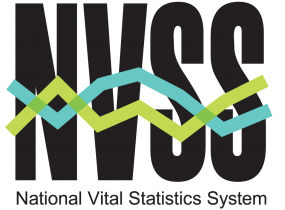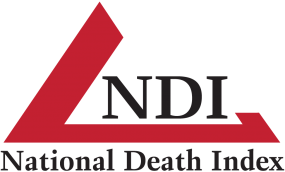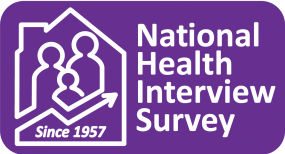Summary of Current Surveys and Data Collection Systems

Data source and methods
Data source and methods
- State vital registration
- Births
- Deaths
- Fetal deaths
- Linked Birth/Infant Death Program
- State vital registration
- Births
- Deaths
- Fetal deaths
- Linked Birth/Infant Death Program
Selected data items
Selected data items
- Birth and death rates
- Birthweight
- Teen and nonmarital births
- Pregnancy outcomes
- Method of delivery
- Preterm delivery/gestational age
- Multiple births
- Medicaid payment
- WIC receipt
- Prenatal care
- Breastfeeding
- Maternal weight and Body Mass Index
- Infant mortality
- Life expectancy
- Causes of death, including fetal causes
- Occupational mortality
- Birth and death rates
- Birthweight
- Teen and nonmarital births
- Pregnancy outcomes
- Method of delivery
- Preterm delivery/gestational age
- Multiple births
- Medicaid payment
- WIC receipt
- Prenatal care
- Breastfeeding
- Maternal weight and Body Mass Index
- Infant mortality
- Life expectancy
- Causes of death, including fetal causes
- Occupational mortality
Targeted sample size
Targeted sample size
- All births: About 4 million records annually
- All deaths: About 2.7 million records annually
- Reported fetal deaths of 20 or more weeks gestation: About 26,000 annually
- Counts of marriages and divorces
- All births: About 4 million records annually
- All deaths: About 2.7 million records annually
- Reported fetal deaths of 20 or more weeks gestation: About 26,000 annually
- Counts of marriages and divorces
Disparity variables and data collection
Disparity variables and data collection
For births, deaths, and fetal deaths:
- Office of Management and Budget (OMB) race categories* (1997)
- Education
For births and deaths:
- Marital status
- Primary language information not collected
For births, deaths, and fetal deaths:
- Office of Management and Budget (OMB) race categories* (1997)
- Education
For births and deaths:
- Marital status
- Primary language information not collected
Frequency
Frequency
Annual
Annual
FY 2020–2021 plans
FY 2020–2021 plans
- Continue monthly, quarterly, and annual reporting
- Assist states in automating or re-engineering IT systems to enhance timeliness and quality of reporting
- Evaluate quality of birth data items added in 2003 and evaluate potential new items for collection
- Promote e-learning training for birth certificates and fetal death reports and assess impact of training
- Promote mobile app for cause-of-death certification; complete development of and promote e-learning training for death certificates; and assess impact of training
- Enhance new data access methods and reports
- Continue to enhance natality and mortality surveillance system
- Improve timeliness of vital statistics reports and data files
- Re-engineer or replace the medical coding system
- Expand cause-of-death coding to include more detailed supplemental codes for specific drugs (i.e., more detail than available in ICD–10)
- Continue monthly, quarterly, and annual reporting
- Assist states in automating or re-engineering IT systems to enhance timeliness and quality of reporting
- Evaluate quality of birth data items added in 2003 and evaluate potential new items for collection
- Promote e-learning training for birth certificates and fetal death reports and assess impact of training
- Promote mobile app for cause-of-death certification; complete development of and promote e-learning training for death certificates; and assess impact of training
- Enhance new data access methods and reports
- Continue to enhance natality and mortality surveillance system
- Improve timeliness of vital statistics reports and data files
- Re-engineer or replace the medical coding system
- Expand cause-of-death coding to include more detailed supplemental codes for specific drugs (i.e., more detail than available in ICD–10)
National Death Index

www.cdc.gov/nchs/ndi/index.htm
Data source and methods
Data source and methods
- State registration areas: death certificates
- State registration areas: death certificates
Selected data items
Selected data items
- Facilitates epidemiological follow-up studies from 1979–2019
- Verifies death for study participants for health and medical research purposes only
- Optional release of coded causes of death available to users upon request
- NCHS surveys can be linked to NDI
- Facilitates epidemiological follow-up studies from 1979–2019
- Verifies death for study participants for health and medical research purposes only
- Optional release of coded causes of death available to users upon request
- NCHS surveys can be linked to NDI
Targeted sample size
Targeted sample size
- All deaths
- All deaths
Disparity variables and data collection
Disparity variables and data collection
Frequency
Frequency
- Semi-annual
- Semi-annual
FY 2020–2021 plans
FY 2020–2021 plans
- Continue ongoing operations
- Continue to improve timeliness of data availability for matching
- Update NDI website
- Expand outreach to health and medical research community
- Pilot new funding model to improve and expand use of NDI for National Institutes of Health funded projects
- Continue ongoing operations
- Continue to improve timeliness of data availability for matching
- Update NDI website
- Expand outreach to health and medical research community
- Pilot new funding model to improve and expand use of NDI for National Institutes of Health funded projects
* The primary OMB categories include white, black or African American, Asian, Native Hawaiian or Pacific Islanders, and American Indian or Alaska Native. Hispanic or Latino, not Hispanic or Latino. Multiple races can be reported. While data are collected in the categories indicated, sample sizes do not always allow for reporting in these categories. Some surveys collect more categories than the primary OMB categories.

www.cdc.gov/nchs/ahcd/about_ahcd.htm
Data source and methods
Data source and methods
- Review medical records and abstract patient visit information
- Interview physicians and community health centers (CHCs) providers
- Review medical records and abstract patient visit information
- Interview physicians and community health centers (CHCs) providers
Selected data items
Selected data items
- Patient visit information, including demographics, vital signs, reason for visit, injury, continuity of care, diagnosis, chronic conditions, medical services, medications, and various laboratory test results
- Physician and CHC provider practice characteristics including: specialty, ownership, tests performed, and revenue
- Use of electronic medical records
- Patient visit information, including demographics, vital signs, reason for visit, injury, continuity of care, diagnosis, chronic conditions, medical services, medications, and various laboratory test results
- Physician and CHC provider practice characteristics including: specialty, ownership, tests performed, and revenue
- Use of electronic medical records
Targeted sample size
Targeted sample size
- 3,000 physicians in offce-based practices
- 104 community health centers with up to 312 community health center providers
- 99,360 patient visits
- 3,000 physicians in offce-based practices
- 104 community health centers with up to 312 community health center providers
- 99,360 patient visits
Disparity variables and data collection
Disparity variables and data collection
OMB race and Hispanic origin categories*(1997)
OMB race and Hispanic origin categories*(1997)
Frequency
Frequency
Annual
Annual
FY 2020–2021 plans
FY 2020–2021 plans
- Finish 2019 data collection
- Continue annual survey
- Additional content to be added to the 2020 physician and CHC interviews to collect data on the effects of COVID-19 on the provision of ambulatory care
- Finish 2019 data collection
- Continue annual survey
- Additional content to be added to the 2020 physician and CHC interviews to collect data on the effects of COVID-19 on the provision of ambulatory care

www.cdc.gov/nchs/nehrs/about.htm
Data source and methods
Data source and methods
Mixed mode (i.e., web, mail, and telephone) survey of office-based physicians
Mixed mode (i.e., web, mail, and telephone) survey of office-based physicians
Selected data items
Selected data items
-
Provider characteristics
-
Use of electronic medical records and features
-
Specialty, practice size, and ownership
-
Physician attitudes about electronic health records, barriers, benefits, and impact
-
Provider characteristics
-
Use of electronic medical records and features
-
Specialty, practice size, and ownership
-
Physician attitudes about electronic health records, barriers, benefits, and impact
Targeted sample size
Targeted sample size
10,302 physicians in office-based practices in 50 states and Washington, DC
10,302 physicians in office-based practices in 50 states and Washington, DC
Disparity variables and data collection
Disparity variables and data collection
None collected
None collected
Frequency
Frequency
Annual
Annual
FY 2020–2021 plans
FY 2020–2021 plans
- Continue annual survey
-
Additional content to be added to the 2020 interview to collect data on the use of telemedicine during the COVID-19 pandemic
- Continue annual survey
-
Additional content to be added to the 2020 interview to collect data on the use of telemedicine during the COVID-19 pandemic

www.cdc.gov/nchs/ahcd/about_ahcd.htm
Data source and methods
Data source and methods
- Review medical records for patient visit information
- Interview hospital administrators
- Review medical records for patient visit information
- Interview hospital administrators
Selected data items
Selected data items
- Patient demographics and characteristics
- Length of stay in emergency department
- Diagnoses, procedures, and treatment
- Facility characteristics
- Visit volumes
- Use of electronic medical records and features
- Patient demographics and characteristics
- Length of stay in emergency department
- Diagnoses, procedures, and treatment
- Facility characteristics
- Visit volumes
- Use of electronic medical records and features
Targeted sample size
Targeted sample size
- 410 hospitals with emergency departments
- 65,000 patient visits
- 410 hospitals with emergency departments
- 65,000 patient visits
Disparity variables and data collection
Disparity variables and data collection
OMB race and Hispanic origin categories*(1997)
OMB race and Hispanic origin categories*(1997)
Frequency
Frequency
Annual
Annual
FY 2020–2021 plans
FY 2020–2021 plans
- Finish 2019 data collection
- Continue annual survey
- Collect data for emergency departments
- Additional content to be added to the 2021 emergency department interview to collect data on the effects of COVID-19 on the provision of ambulatory care
- Finish 2019 data collection
- Continue annual survey
- Collect data for emergency departments
- Additional content to be added to the 2021 emergency department interview to collect data on the effects of COVID-19 on the provision of ambulatory care
* The primary OMB categories include white, black or African American, Asian, Native Hawaiian or Pacific Islanders, American Indian or Alaska Native. Hispanic or Latino, not Hispanic or Latino. Multiple races can be reported. While data are collected in the categories indicated, sample sizes do not always allow for reporting in these categories. Some surveys collect more categories than the primary OMB categories.

Data source and methods
Data source and methods
Hospital billing (UB–04) records and electronic health records
Hospital billing (UB–04) records and electronic health records
Selected data items
Selected data items
Utilization of hospital care, inpatient care, and care delivered in emergency departments
Utilization of hospital care, inpatient care, and care delivered in emergency departments
Targeted sample size
Targeted sample size
608 hospitals
608 hospitals
Disparity variables and data collection
Disparity variables and data collection
OMB race and Hispanic-origin categories* (1997) for EHR data collection using the Implementation Guide
OMB race and Hispanic-origin categories* (1997) for EHR data collection using the Implementation Guide
Frequency
Frequency
Annual
Annual
FY 2020–2021 plans
FY 2020–2021 plans
- Finish 2019 data collection
- Continue recruitment of hospitals and collection of data in hospitals currently recruited
- Link NDI and Centers for Medicare and Medicaid Services (CMS) data
- Additional content to be added to the 2020 Annual Hospital Interview to collect data on the effects of COVID-19 on the provision of care, and the number of visits related to the virus
- Finish 2019 data collection
- Continue recruitment of hospitals and collection of data in hospitals currently recruited
- Link NDI and Centers for Medicare and Medicaid Services (CMS) data
- Additional content to be added to the 2020 Annual Hospital Interview to collect data on the effects of COVID-19 on the provision of care, and the number of visits related to the virus

Data source and methods
Data source and methods
- Mail, web, and telephone surveys of directors of adult day care services centers and residential care communities
- CMS administrative data (claims, assessment, and certification) on nursing homes and residents, home health agencies and patients, hospices and patients, long-term care hospitals and patients, and inpatient rehabilitation hospitals and patients
- Mail, web, and telephone surveys of directors of adult day care services centers and residential care communities
- CMS administrative data (claims, assessment, and certification) on nursing homes and residents, home health agencies and patients, hospices and patients, long-term care hospitals and patients, and inpatient rehabilitation hospitals and patients
Selected data items
Selected data items
- Provider geographic and operating characteristics, services, practices, and staffing
- Services user (residents, participants, and patients) characteristics, including demographics, diagnoses, cognitive and physical functioning, falls, hospital and emergency department use, advance care planning, polypharmacy, antipsychotic medications, and service use
- Rotating topic modules
- State-level estimates where feasible
- Provider geographic and operating characteristics, services, practices, and staffing
- Services user (residents, participants, and patients) characteristics, including demographics, diagnoses, cognitive and physical functioning, falls, hospital and emergency department use, advance care planning, polypharmacy, antipsychotic medications, and service use
- Rotating topic modules
- State-level estimates where feasible
Targeted sample size
Targeted sample size
- 11,600 (approximate) residential care communities
- 5,000 (approximate) adult day services centers
- 11,600 (approximate) residential care communities
- 5,000 (approximate) adult day services centers
Disparity variables and data collection
Disparity variables and data collection
OMB race and Hispanic-origin categories* (1997)
OMB race and Hispanic-origin categories* (1997)
Frequency
Frequency
Annual
Annual
FY 2020–2021 plans
FY 2020–2021 plans
- Prepare for 2020 survey implementation
- Additional content to be added to the 2020 wave of the adult day services center and residential care community components to collect data on the number of COVID-19 infections, hospitalizations, and deaths among services users and staff; availability of personal protective equipment and testing; use of telemedicine; visitor policies and general infection control policies
- Create in-house restricted and public-use data files for the 2018 wave
- Prepare for 2020 survey implementation
- Additional content to be added to the 2020 wave of the adult day services center and residential care community components to collect data on the number of COVID-19 infections, hospitalizations, and deaths among services users and staff; availability of personal protective equipment and testing; use of telemedicine; visitor policies and general infection control policies
- Create in-house restricted and public-use data files for the 2018 wave
* The primary OMB categories include white, black or African American, Asian, Native Hawaiian or Pacific Islanders, American Indian or Alaska Native. Hispanic or Latino, not Hispanic or Latino. Multiple races can be reported. While data are collected in the categories indicated, sample sizes do not always allow for reporting in these categories. Some surveys collect more categories than the primary OMB categories.

Data source and methods
Data source and methods
Personal interviews
Personal interviews
Selected data items
Selected data items
- Chronic conditions
- Health status
- Functioning and disability
- Health insurance
- Health care access and use
- Health-related behaviors
- Chronic conditions
- Health status
- Functioning and disability
- Health insurance
- Health care access and use
- Health-related behaviors
Targeted sample size
Targeted sample size
- 30,000 sample adults and 10,000 sample children
- Address-based sample design
- 30,000 sample adults and 10,000 sample children
- Address-based sample design
Disparity variables and data collection
Disparity variables and data collection
- OMB race and Hispanic-origin categories* (1997)
- Family income
- Poverty level
- Marital status
- Education
- Birthplace
- OMB race and Hispanic-origin categories* (1997)
- Family income
- Poverty level
- Marital status
- Education
- Birthplace
Frequency
Frequency
Annual
Annual
FY 2020–2021 plans
FY 2020–2021 plans
- Annual sustaining sponsored content on cancer control and prevention, immunizations, non-cigarette tobacco product use, food security, and insulin use
- Emerging content to address health, health care, and well-being issues regarding COVID-19
- 2020 sponsored content on diabetes, asthma, prescription opioid use and pain management, and age of onset of disability
- Pilot study to test the collection of biomeasures from National Health Interview Survey respondents
- Pilot study to evaluate the feasibility of follow-up interviews with adolescents
- Annual sustaining sponsored content on cancer control and prevention, immunizations, non-cigarette tobacco product use, food security, and insulin use
- Emerging content to address health, health care, and well-being issues regarding COVID-19
- 2020 sponsored content on diabetes, asthma, prescription opioid use and pain management, and age of onset of disability
- Pilot study to test the collection of biomeasures from National Health Interview Survey respondents
- Pilot study to evaluate the feasibility of follow-up interviews with adolescents

Data source and methods
Data source and methods
- Personal interviews
- Physical examinations
- Laboratory tests
- Personal interviews
- Physical examinations
- Laboratory tests
Selected data items
Selected data items
- Selected diseases and conditions, including those undiagnosed or undetected
- Nutrition monitoring, including birth to 24 months and infant formula
- Environmental exposures monitoring
- Children’s growth and development
- Infectious disease monitoring
- Overweight and diabetes
- Hypertension and cholesterol
- Health behaviors
- Oral health
- Hearing and balance
- Cognitive functioning
- Prescription drug use
- Dietary supplement use
- Selected diseases and conditions, including those undiagnosed or undetected
- Nutrition monitoring, including birth to 24 months and infant formula
- Environmental exposures monitoring
- Children’s growth and development
- Infectious disease monitoring
- Overweight and diabetes
- Hypertension and cholesterol
- Health behaviors
- Oral health
- Hearing and balance
- Cognitive functioning
- Prescription drug use
- Dietary supplement use
Targeted sample size
Targeted sample size
- 5,000 persons per year, all ages
- Oversample persons aged 60 and over
- Oversample black, Asian, and Hispanic persons
- 5,000 persons per year, all ages
- Oversample persons aged 60 and over
- Oversample black, Asian, and Hispanic persons
Disparity variables and data collection
Disparity variables and data collection
- OMB race and Hispanic-origin categories* (1997)
- Income and poverty index
- Education
- Occupation
- Type of living quarters
- Social services
- Birthplace
- Acculturation questions, including language usually spoken at home
- OMB race and Hispanic-origin categories* (1997)
- Income and poverty index
- Education
- Occupation
- Type of living quarters
- Social services
- Birthplace
- Acculturation questions, including language usually spoken at home
Frequency
Frequency
Continuous since 1999, 2-year survey cycles
Continuous since 1999, 2-year survey cycles
FY 2020–2021 plans
FY 2020–2021 plans
- Resume data collection following survey suspension due to corona pandemic
- Evaluate the inclusion of COVID-19 components when data collection resumes
- Release data on 2-year cycles
- Maintain DNA repository
- Maintain biospecimen repository
- Infant blood collection pilot
- Resume data collection following survey suspension due to corona pandemic
- Evaluate the inclusion of COVID-19 components when data collection resumes
- Release data on 2-year cycles
- Maintain DNA repository
- Maintain biospecimen repository
- Infant blood collection pilot
* The primary OMB categories include white, black or African American, Asian, Native Hawaiian or Pacific Islanders, American Indian or Alaska Native. Hispanic or Latino, not Hispanic or Latino. Multiple races can be reported. While data are collected in the categories indicated, sample sizes do not always allow for reporting in these categories. Some surveys collect more categories than the primary OMB categories.

Data source and methods
Data source and methods
- Personal interviews
- Men and women aged 15–44 years through September 2015
- Men and women aged 15–49 years since September 2015
- Personal interviews
- Men and women aged 15–44 years through September 2015
- Men and women aged 15–49 years since September 2015
Selected data items
Selected data items
- Contraception and sterilization
- Pregnancy and birth history
- Teenage sexual activity and pregnancy
- Family planning and services and other reproductive health care
- Unintended pregnancy
- Infertility, adoption, and breastfeeding
- Marriage, divorce, and cohabitation
- Fatherhood involvement
- HIV/STD risk behavior
- Contraception and sterilization
- Pregnancy and birth history
- Teenage sexual activity and pregnancy
- Family planning and services and other reproductive health care
- Unintended pregnancy
- Infertility, adoption, and breastfeeding
- Marriage, divorce, and cohabitation
- Fatherhood involvement
- HIV/STD risk behavior
Targeted sample size
Targeted sample size
- 5,000 men and women aged 15–49 years per survey year
- Oversample black and Hispanic persons
- Disparity variables and data collection OMB race and Hispanic-origin categories* (1997)
- Family and individual income; percent of poverty level
- Sources of income
- Education
- Marital and cohabitating status
- Primary language information collection began in Fall 2011
- 5,000 men and women aged 15–49 years per survey year
- Oversample black and Hispanic persons
- Disparity variables and data collection OMB race and Hispanic-origin categories* (1997)
- Family and individual income; percent of poverty level
- Sources of income
- Education
- Marital and cohabitating status
- Primary language information collection began in Fall 2011
Frequency
Frequency
Continuous
Continuous
FY 2020–2021 plans
FY 2020–2021 plans
- Data collection for 2017–2019 was completed in September 2019 and public-use files will be released in late 2020
- Expect to award new contract for continued data collection to start in 2022
- Data collection for 2017–2019 was completed in September 2019 and public-use files will be released in late 2020
- Expect to award new contract for continued data collection to start in 2022

www.cdc.gov/nchs/rands/index.htm
Data source and methods
Data source and methods
Primarily web surveys from commercial recruited panels with telephone mode surveys with English-speaking adults aged 18 and over
Primarily web surveys from commercial recruited panels with telephone mode surveys with English-speaking adults aged 18 and over
Selected data items
Selected data items
- RANDS is fielded to support different methodological studies, including question-response patterns, so most content varies among rounds
- Selected chronic conditions fielded each round
- RANDS is fielded to support different methodological studies, including question-response patterns, so most content varies among rounds
- Selected chronic conditions fielded each round
Targeted sample size
Targeted sample size
Sample size varies by round with target between 2,000 and 5,000 per round
Sample size varies by round with target between 2,000 and 5,000 per round
Disparity variables and data collection
Disparity variables and data collection
- OMB race and Hispanic-origin categories* (1997)
- Income (varies by commercial vendor)
- Education
- Marital status
- OMB race and Hispanic-origin categories* (1997)
- Income (varies by commercial vendor)
- Education
- Marital status
Frequency
Frequency
As needed
As needed
FY 2020–2021 plans
FY 2020–2021 plans
- Fielded RANDS during COVID in FY 20
- Release experimental estimates regarding health care access during the pandemic
- Public-use files for RANDS 1 through 3 released in June 2020, expect to release public-use files for RANDS during COVID-19 and RANDS 4 in January of 2021
- Field additional round in FY 2021
- Fielded RANDS during COVID in FY 20
- Release experimental estimates regarding health care access during the pandemic
- Public-use files for RANDS 1 through 3 released in June 2020, expect to release public-use files for RANDS during COVID-19 and RANDS 4 in January of 2021
- Field additional round in FY 2021
* The primary OMB categories include white, black or African American, Asian, Native Hawaiian or Pacific Islanders, American Indian or Alaska Native. Hispanic or Latino, not Hispanic or Latino. Multiple races can be reported. While data are collected in the categories indicated, sample sizes do not always allow for reporting in these categories. Some surveys collect more categories than the primary OMB categories.